VW Tayron vs Dacia Bigster - Differences and prices compared
Costs and Efficiency:
Looking at overall running costs, both models reveal some interesting differences in everyday economy.
Dacia Bigster has a convincingly advantage in terms of price – it starts at 20600 £, while the VW Tayron costs 39600 £. That’s a price difference of around 19050 £.
Fuel consumption also shows a difference: VW Tayron manages with 1.50 L and is therefore clearly more efficient than the Dacia Bigster with 4.70 L. The difference is about 3.20 L per 100 km.
Engine and Performance:
Power, torque and acceleration say a lot about how a car feels on the road. This is where you see which model delivers more driving dynamics.
When it comes to engine power, the VW Tayron has a clearly edge – offering 272 HP compared to 155 HP. That’s roughly 117 HP more horsepower.
In acceleration from 0 to 100 km/h, the VW Tayron is clearly quicker – completing the sprint in 6.10 s, while the Dacia Bigster takes 9.70 s. That’s about 3.60 s faster.
In terms of top speed, the VW Tayron performs evident better – reaching 240 km/h, while the Dacia Bigster tops out at 180 km/h. The difference is around 60 km/h.
There’s also a difference in torque: VW Tayron pulls clearly stronger with 400 Nm compared to 230 Nm. That’s about 170 Nm difference.
Space and Everyday Use:
Cabin size, boot volume and payload all play a role in everyday practicality. Here, comfort and flexibility make the difference.
Seats: offers more seating capacity – vs .
In curb weight, Dacia Bigster is to a small extent lighter – 1425 kg compared to 1682 kg. The difference is around 257 kg.
In terms of boot space, the VW Tayron offers clearly perceptible more room – 885 L compared to 667 L. That’s a difference of about 218 L.
In maximum load capacity, the VW Tayron performs barely noticeable better – up to 2090 L, which is about 153 L more than the Dacia Bigster.
When it comes to payload, VW Tayron slightly takes the win – 566 kg compared to 467 kg. That’s a difference of about 99 kg.
Who wins the race?
The VW Tayron proves to be is largely superior and therefore becomes our DriveDuel Champion!
VW Tayron is the better all-rounder in this comparison.
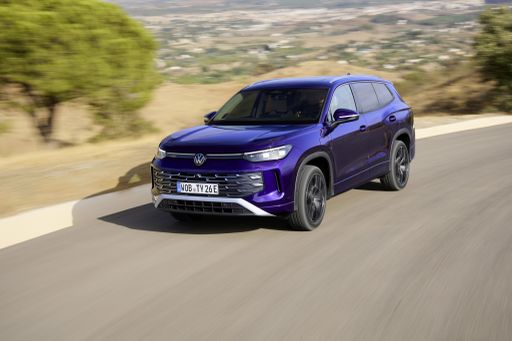 @ Volkswagen AG / VW Media
@ Volkswagen AG / VW Media
VW Tayron
Costs and Consumption
View detailed analysis
Engine and Performance
View detailed analysis
Dimensions and Body
View detailed analysis
VW Tayron
The VW Tayron is Volkswagen's roomy, no-nonsense SUV that pairs clean, familiar styling with a practical cabin built for families and everyday use. It rides comfortably, packs sensible tech and creature comforts, and feels like the sensible sweater of SUVs for buyers who prefer steady value over headline-grabbing drama.
details @ Volkswagen AG / VW Media
@ Volkswagen AG / VW Media
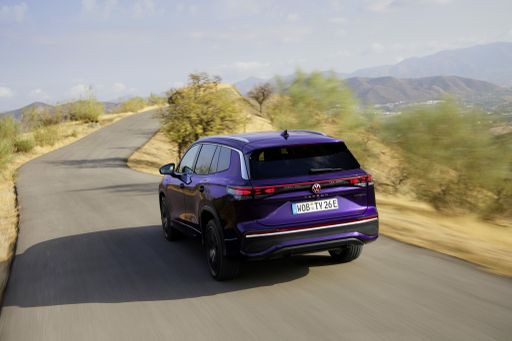 @ Volkswagen AG / VW Media
@ Volkswagen AG / VW Media
 @ Volkswagen AG / VW Media
@ Volkswagen AG / VW Media
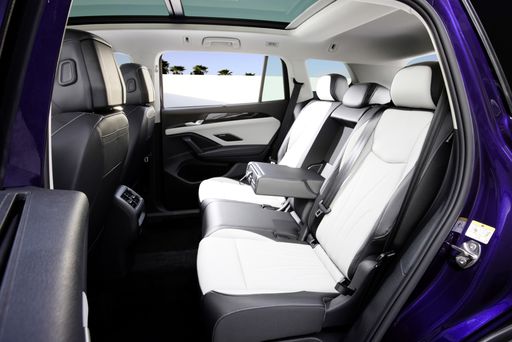 @ Volkswagen AG / VW Media
@ Volkswagen AG / VW Media
Dacia Bigster
The Bigster is poised to redefine the SUV segment with its bold design and spacious interior, catering to the needs of both families and adventure seekers alike. Emphasizing sustainability and practicality, this model reflects a modern approach to automotive engineering, making it a compelling choice for environmentally conscious drivers. With its striking presence on the road, the Bigster not only captures attention but also embodies a new era of versatile mobility.
details @ Dacia / Renault Group Media
@ Dacia / Renault Group Media
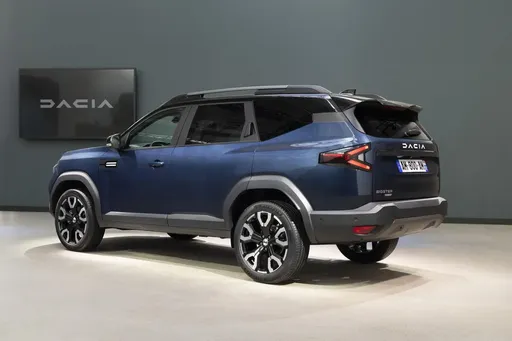 @ Dacia / Renault Group Media
@ Dacia / Renault Group Media
 @ Dacia / Renault Group Media
@ Dacia / Renault Group Media
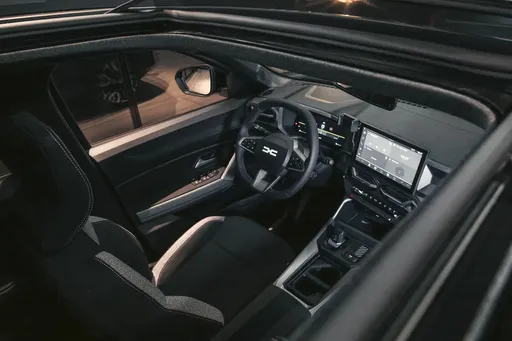 @ Dacia / Renault Group Media
@ Dacia / Renault Group Media
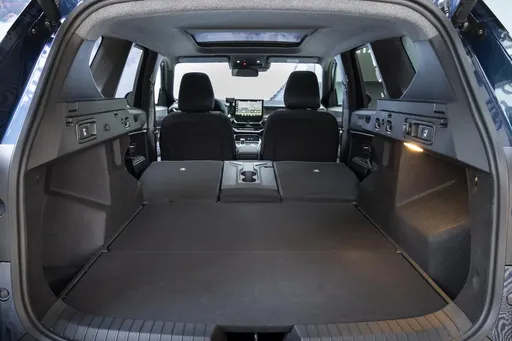 @ Dacia / Renault Group Media
@ Dacia / Renault Group Media
 @ Volkswagen AG / VW Media
@ Volkswagen AG / VW Media
|
 @ Dacia / Renault Group Media
@ Dacia / Renault Group Media
|
|
|
|
Costs and Consumption |
|
|---|---|
|
Price
39600 - 53300 £
|
Price
20600 - 26600 £
|
|
Consumption L/100km
1.5 - 8.5 L
|
Consumption L/100km
4.7 - 7.1 L
|
|
Consumption kWh/100km
-
|
Consumption kWh/100km
-
|
|
Electric Range
116 - 123 km
|
Electric Range
-
|
|
Battery Capacity
19.70 kWh
|
Battery Capacity
-
|
|
co2
33 - 192 g/km
|
co2
106 - 137 g/km
|
|
Fuel tank capacity
45 - 58 L
|
Fuel tank capacity
50 - 55 L
|
Dimensions and Body |
|
|---|---|
|
Body Type
SUV
|
Body Type
SUV
|
|
Seats
5
|
Seats
5
|
|
Doors
5
|
Doors
5
|
|
Curb weight
1682 - 1948 kg
|
Curb weight
1425 - 1547 kg
|
|
Trunk capacity
705 - 885 L
|
Trunk capacity
510 - 667 L
|
|
Length
4792 mm
|
Length
4570 mm
|
|
Width
1853 - 1866 mm
|
Width
1813 mm
|
|
Height
1666 - 1668 mm
|
Height
1705 mm
|
|
Max trunk capacity
1915 - 2090 L
|
Max trunk capacity
1813 - 1937 L
|
|
Payload
489 - 566 kg
|
Payload
383 - 467 kg
|
Engine and Performance |
|
|---|---|
|
Engine Type
Petrol MHEV, Diesel, Petrol, Plugin Hybrid
|
Engine Type
Petrol MHEV, Full Hybrid, LPG
|
|
Transmission
Automatic
|
Transmission
Manuel, Automatic
|
|
Transmission Detail
Dual-Clutch Automatic
|
Transmission Detail
Manual Gearbox, Automated Manual
|
|
Drive Type
Front-Wheel Drive, All-Wheel Drive
|
Drive Type
All-Wheel Drive, Front-Wheel Drive
|
|
Power HP
150 - 272 HP
|
Power HP
130 - 155 HP
|
|
Acceleration 0-100km/h
6.1 - 9.7 s
|
Acceleration 0-100km/h
9.7 - 11.2 s
|
|
Max Speed
204 - 240 km/h
|
Max Speed
180 km/h
|
|
Torque
250 - 400 Nm
|
Torque
230 Nm
|
|
Number of Cylinders
4
|
Number of Cylinders
3 - 4
|
|
Power kW
110 - 200 kW
|
Power kW
96 - 115 kW
|
|
Engine capacity
1498 - 1984 cm3
|
Engine capacity
1199 - 1799 cm3
|
General |
|
|---|---|
|
Model Year
2025
|
Model Year
2025
|
|
CO2 Efficiency Class
E, F, G, B
|
CO2 Efficiency Class
E, D, C
|
|
Brand
VW
|
Brand
Dacia
|
What drivetrain options does the VW Tayron have?
Available configurations include Front-Wheel Drive or All-Wheel Drive.
The prices and data displayed are estimates based on German list prices and may vary by country. This information is not legally binding.
